
The Arctic convoys of World War II were oceangoing convoys which sailed from the United Kingdom, Iceland, and North America to northern ports in the Soviet Union – primarily Arkhangelsk (Archangel) and Murmansk in Russia. There were 78 convoys between August 1941 and May 1945, sailing via several seas of the Atlantic and Arctic oceans, with two gaps with no sailings between July and September 1942, and March and November 1943.
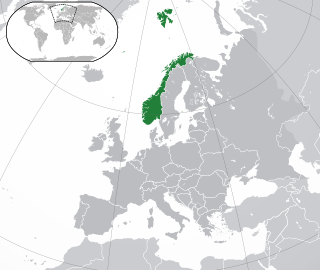
Convoy PQ 16 was an Arctic convoy of British, United States and Allied ships from Iceland to Murmansk and Archangelsk in the Soviet Union during the Second World War. The convoy was the largest yet and was provided with a considerable number of escorts and submarines. QP 12, a return convoy, sailed on the same day
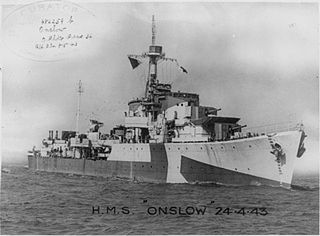
HMS Onslow was an O-class destroyer of the Royal Navy. The O-class were intermediate destroyers, designed before the outbreak of the Second World War to meet likely demands for large number of destroyers. They had a main gun armament of four 4.7 in guns, and had a design speed of 36 kn. Onslow was ordered on 2 October 1939 and was built by John Brown & Company at their Clydebank, Glasgow shipyard, launching on 31 March 1941 and completing on 8 October 1941.

Operation Dervish was the first of the Arctic Convoys of the Second World War by which the Western Allies supplied material to the Soviet Union against Nazi Germany. Included in the convoy was the personnel and equipment of an RAF Wing, for the air defence of the Russian ports, several civilians and diplomatic missions.
Convoy PQ 1 was the second of the Arctic Convoys of World War II by which the Western Allies supplied material aid to the Soviet Union in its fight with Nazi Germany. The convoy sailed from Hvalfiord in Iceland on 29 September 1941 and arrived at Archangelsk on 11 October 1941.

Convoy PQ 18 was an Arctic convoy of forty Allied freighters from Scotland and Iceland to Arkhangelsk in the Soviet Union in the war against Nazi Germany. The convoy departed Loch Ewe, Scotland on 2 September 1942, rendezvoused with more ships and escorts at Iceland and arrived at Arkhangelsk on 21 September. An exceptionally large number of escorts was provided by the Royal Navy in Operation EV, including the first escort carrier to accompany an Arctic convoy. Detailed information on German intentions was provided by the code breakers at Bletchley Park and elsewhere, through Ultra signals decrypts and eavesdropping on Luftwaffe wireless communications.
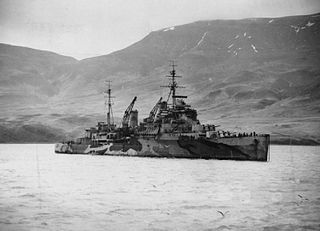
PQ 13 was a British Arctic convoy that delivered war supplies from the Western Allies to the USSR during World War II. The convoy was subject to attack by German air, U-boat and surface forces and suffered the loss of five ships, plus one escort vessel. Fifteen ships arrived safely.

No 151 Wing Royal Air Force was a British unit which operated with the Soviet forces on the Kola Peninsula in the northern USSR during the first months of Operation Barbarossa, in the Second World War. Operation Benedict, the 1941 expedition to Murmansk provided air defence for Allied ships as they were discharging at ports within range of Luftwaffe units in Norway and Finland, then converted Soviet air and ground crews to British Hawker Hurricane IIB fighters and their Rolls-Royce Merlin engines, many of which were due to be delivered under British Lend-Lease arrangements.

HMS Britomart was a Halcyon-class minesweeper of the Royal Navy. She served during the Second World War and was sunk in 1944 in a friendly fire incident. The actor Robert Newton served aboard her until 1943.
Convoy PQ 7 was the eighth of the Arctic convoys of the Second World War by which the Western Allies supplied material aid to the Soviet Union in its fight with Nazi Germany. The convoy was in two parts: PQ 7a sailed from Hvalfjörður, Iceland on 26 December 1941 and arrived at Murmansk on 12 January 1942. PQ 7b sailed from Hvalfjord, Iceland on 31 December 1941 and arrived in Murmansk on 11 January 1942.
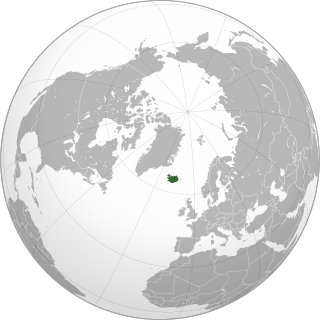
Operation FB took place as part of the Arctic Convoys of World War II. The operation consisted of independent sailings by unescorted merchant ships between Iceland and Murmansk. In late 1942, Allies had taken the offensive against Germany but the dispatch of supplies to the USSR by convoy via the Arctic route was suspended, due to the demands of the Mediterranean campaign. Convoy PQ 19 was cancelled because the Home Fleet diverted ships to the Mediterranean for Operation Torch which would have had to be postponed for three weeks had ships been provided for PQ 19.
Convoy PQ 18 was the last of the PQ/QP series of arctic convoys during World War II, bound from US and British ports via Reykjavík in Iceland to the Barents Sea and White Sea ports of the Soviet Union, particularly Murmansk and Archangel. The convoy sailed on 2 September 1942 and arrived three weeks later on 21 September 1942. It was opposed by German sea and air forces based in occupied Norway.

Convoy PQ 15 was an Arctic convoy sent from Iceland by the Western Allies to aid the Soviet Union during the Second World War. The convoy sailed in late April 1942, reaching the Soviet northern ports after air attacks that sank three ships out of twenty-five.
Convoy PQ 12 was an Arctic convoy sent from Great Britain by the Western Allies to aid the Soviet Union during World War II. It sailed in March 1942, reaching Murmansk despite a sortie against it by the German battleship Tirpitz. All ships arrived safely.
Convoys PQ 9 and 10 were Arctic convoys sent from Great Britain by the Western Allies to aid the Soviet Union during World War II. They sailed together in early February 1942 and arrived in Murmansk without loss.
Convoy JW 51A was an Arctic convoy sent from Great Britain by the Western Allies to aid the Soviet Union during World War II. It sailed in December 1942, reaching the Soviet northern ports at the end of the month.
Convoy QP 10 was an Arctic convoy of World War II, consisting of empty merchant ships returning from the Soviet Union after delivering their cargo there. The convoy consisted of 16 merchant ships and an escort of nine warships. The convoy departed Murmansk on 10 April 1942 and arrived in Reykjavik on 21 April. The convoy was attacked by German U-boats and aircraft, resulting in the loss of four merchant ships. Another ship, Stone Street, was damaged by air attack and forced to turn back to the Kola Inlet. The convoy's escorts shot down six German planes and damaged another during the course of the voyage. Later, six merchant ships from Convoy PQ 14 joined QP 10.

QP 14 was an Arctic convoy of the QP series which ran during World War II. It was one of a series of convoys run to return Allied ships from Soviet northern ports to home ports in Britain. It sailed in September 1942 from Archangel in Russia to Loch Ewe in Scotland.
Convoy QP 15 was an Arctic convoy of the PQ/QP series which ran during the Second World War. It was one of a series of convoys run to return Allied ships to home ports in the United Kingdom from the northern ports of the Soviet Union. It sailed in November 1942 and was the last convoy in the "QP" series. It was scattered by a storm which sank the Soviet destroyer Sokrushitelny, and was attacked by U-boats of the German Navy which sank two of the thirty merchant ships.
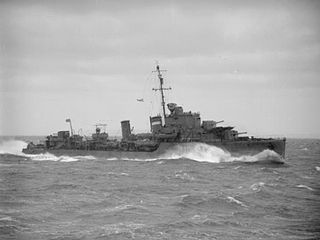
Convoy QP 13 was an Arctic convoy of the PQ/QP series which ran during the Second World War. It was the thirteenth of the numbered series of convoys of merchant ships westbound from the Arctic ports of Arkhangelsk and Murmansk to the United Kingdom, Iceland, and North America.











